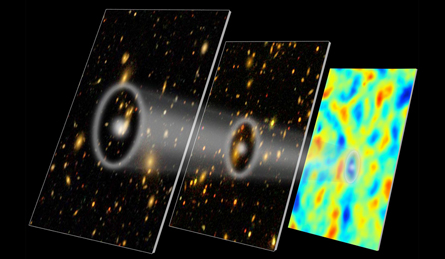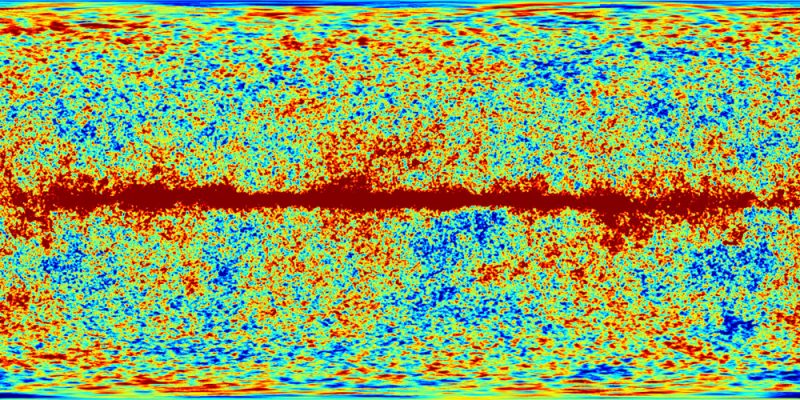‘Ruler’ to measure space
Study of energy waves formed during the Big Bang supports Einstein’s prediction that a strange, invisible force is pushing the universe apart

More than 80 years ago, Albert Einstein thought he’d made a big mistake. But a new study based on observations of distant galaxies suggests that the brilliant scientist was most likely correct.
In 1917, the famous German-born physicist — who studied energy, matter and the interaction between the two — wrote down his ideas about the shape and size of the universe. But Einstein had a problem. Although he thought the size of the universe was not changing, his mathematical equations showed otherwise. They suggested gravity, a force that brings objects together, would cause the entire universe to shrink. So to make his equations work, he included a kind of fudge factor that would act against gravity. Einstein called this correction the “cosmological constant.”
When astronomers discovered in the 1920s that the universe was indeed getting larger, Einstein assumed that his correction factor was not needed. In fact, he called his creation of that cosmological constant his biggest blunder.

Then, in 1998, scientists discovered that the universe’s growth is actually speeding up. That discovery suggested the universe is filled with some mysterious force that acts against gravity and pushes everything away from everything else. This “dark energy” must be everywhere, and scientists are trying to figure out if it has the same properties as Einstein’s old cosmological constant.
Astronomers on a project called BOSS are now testing Einstein’s ideas. So far, they’ve measured distances to more than 250,000 galaxies. Their new data pretty solidly suggest that dark energy — in the form of the cosmological constant — is speeding up the expansion of the universe.
The BOSS project looks for energy waves that formed shortly after the Big Bang and continue today to race away from distant galaxies. The waves are like those that spread out from a pebble dropped into a pond. These waves can be used as a kind of space ruler, telling scientists how far away the galaxies are from us — and how quickly the universe is expanding. BOSS’s measurements line up with previous measurements. They also show that Einstein’s cosmological constant describes that expansion.
Dark energy has been a difficult idea for scientists to accept because it’s been impossible to measure directly — scientists can only see its effects. (Imagine, for example, that you lived on the surface of an inflating balloon. You’d see your neighbors moving away from you, but you wouldn’t be able to see the air increasing inside the balloon.) As a result, physicists look for other ways to explain the strange behavior of our universe. Precise studies like this one from BOSS give scientists more confidence in the odd idea of dark energy.
Power Words
(adapted from the New Oxford American Dictionary)
dark energy A theoretical force that counteracts gravity and causes the universe to expand at an accelerating rate.
gravity The force that attracts any body with mass, or bulk, toward any other body with mass. The more mass there is, the more gravity there is.
physics The study of the nature and properties of matter and energy.







